Covid: What happens if a school pupil gets coronavirus?
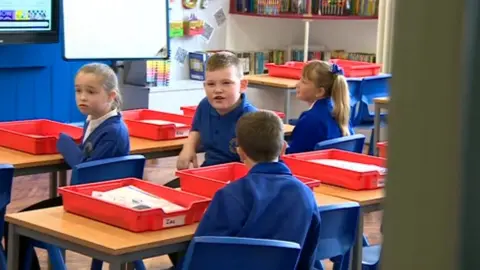 BBC
BBCIt was described as Wales' "biggest post-devolution challenge" - getting children into the classroom for the start of the school year.
After coronavirus ended the 2019-20 academic year abruptly in March, Education Minister Kirsty Williams said this was imperative for "wellbeing, learning progress and mental health".
Children "checked in" during June as lockdown was eased, before school doors reopened fully at the start of September.
But how has it gone?
It was described as "a new normal" with a staggered return over a couple of weeks and limited social distancing within "contact groups" of about 30 pupils.
Ms Williams also tried to allay fears by saying schools are "safe and secure", with children not seeming to transmit the virus, unlike adults in other settings.
How many pupils have had coronavirus?
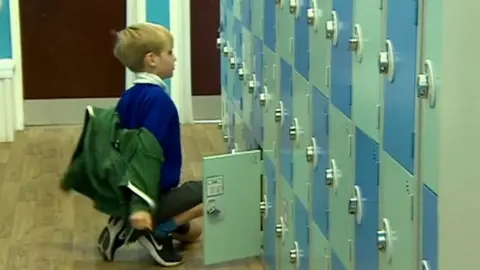
Public Health Wales said since 1 September, a total of 298 pupils and 279 staff had received a positive Covid-19 test result from 344 schools across Wales.
But with roughly 1,500 schools in total - which includes primaries, middle, secondary, independent and special schools - the vast majority have recorded zero cases.
Health Minister Vaughan Gething said about 80% of schools have had no cases and so far transmission has taken place mainly "outside of the school" or between "adults working in the school" rather than between pupils.
The Welsh Government has said keeping learning centres open is a priority as we tackle the pandemic.
How are cases detected among pupils?
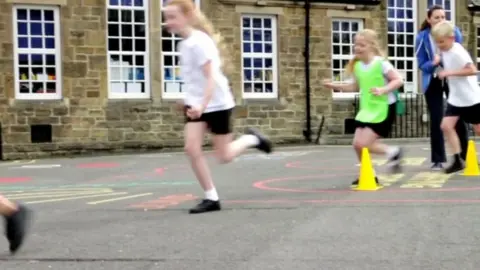
According to the Welsh NHS, symptoms of coronavirus among children include a high temperature, a new continuous cough and a loss or change to their sense of smell or taste.
The Welsh Government advised schools that anyone displaying symptoms in school should be sent home and must self-isolate while a test is arranged, or they await results.
If the result comes back positive, the contact tracing system kicks into action, locating fellow pupils and anyone who they have been in close proximity to.
These will then also have to self-isolate for 14 days, and not be allowed to visit relatives or friends, to go outdoors to exercise or to shop. However, the rules will not apply to parents, unless they exhibit symptoms.
If a negative test is returned by someone asked to self-isolate, the guidance states they are able to return to school as long as everyone in their household with symptoms has also tested negative.
Each local authority may interpret the guidance differently.
Which schools have been affected?
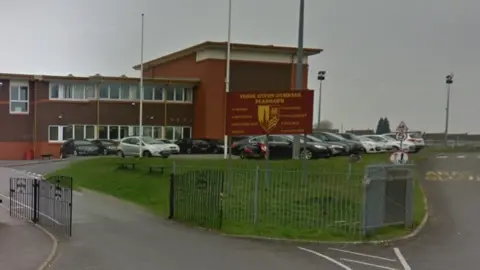 Google
GoogleWhile a relatively low number of schools have so far recorded cases, a handful of positive test results can have a big impact.
Cardiff's Ysgol Gyfun Gymraeg Plasmawr has recorded 11 cases, and although just two teachers and a teaching assistant tested positive, 35 staff are self-isolating after being in contact with them during the "infectious period".
After six pupils also tested positive, Years 7, 8, 9, 12 and 13 will all study from home for two weeks until 16 October - because either they or their teacher is self-isolating.
In September, more than 200 pupils and three staff members from Bryntirion Comprehensive, Bridgend, had to stay at home for two weeks after being in contact with a person who tested positive.
The entire Ystruth Primary School, Blaina, also had to close for two weeks in September as staff and support workers self-isolated.
It is estimated more than 1,500 staff and pupils from north Wales' six councils - Anglesey, Gwynedd, Denbighshire, Flintshire, Conwy and Wrexham - are currently self-isolating.
How do self-isolating pupils study?
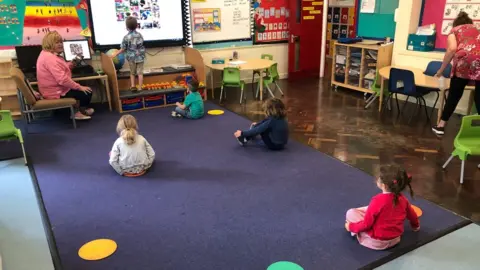
Between March and July, schools were setting work digitally on the Hwb learning platform.
It had tens of thousands of log-ins every day, as youngsters got used to learning this way.
The Welsh Government made £3m available to help those who were considered digitally-excluded and did not have access to an iPad, computer or broadband.
Those self-isolating at home for a fortnight will be expected to work in a similar way.
How will it affect working parents?
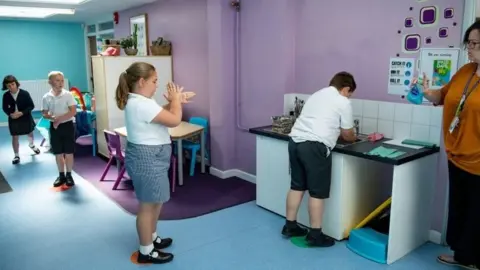 PA Media
PA MediaGovernment advice suggests that parents should work from home if possible - however for some jobs, this may not be possible, especially if they are juggling childcare.
If the child is exhibiting symptoms of coronavirus, it is even less likely that parents will be able to work from home.
Citizens Advice suggests options such as taking parental leave, unpaid leave or dependant leave, which some employers may offer.
Parents will be able to claim statutory sick pay if they need to self-isolate because they or their child exhibits symptoms.
Could there be a half term lockdown?
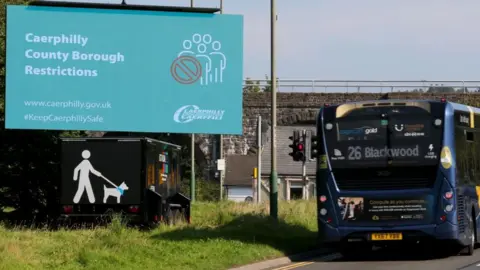 Getty Images
Getty ImagesAs cases of coronavirus continue to rise during a second wave, one suggestion has been for a "circuit break" or an extended period of tighter restrictions to suppress it.
This could take place during October half term, with Scotland's First Minister Nicola Sturgeon looking into the possibility.
So far in Wales, local lockdowns have been the favoured approach and currently, 2.3 million people are not allowed to leave their local authority area, although they can still travel to go to school.
"I think people need to get ready for that scenario," Wales' chief medical officer Frank Atherton said.
"We decide whether local restrictions are needed, and I suspect we may be going in and out of those restrictions over the next few months."
So, while there will not necessarily be a circuit break during half term, a getaway may not be possible, with many people not allowed to leave their local area to contain the spread of the virus.
